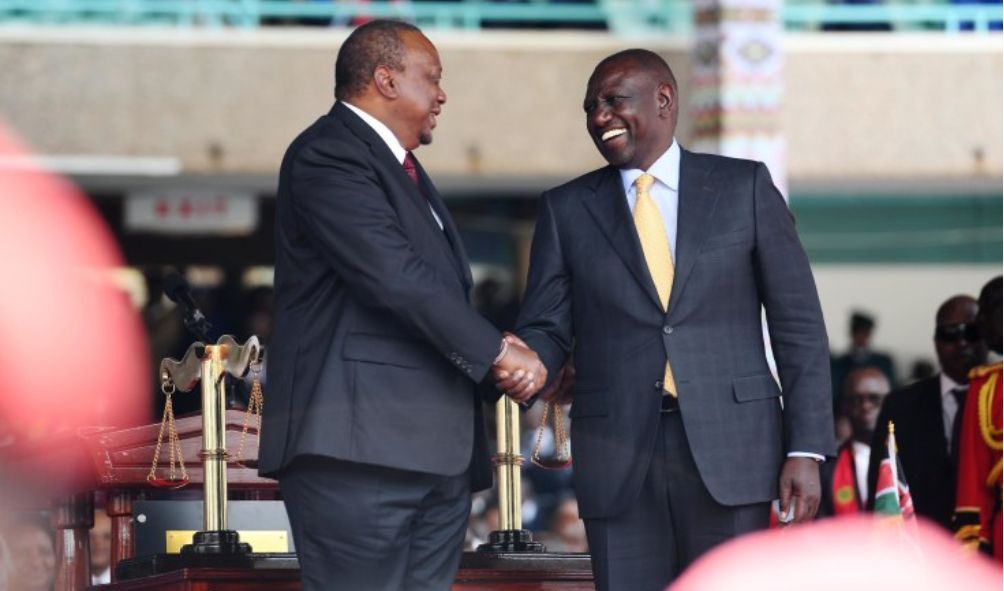Public debt crosses the 9trn mark

Public debt crosses the 9trn mark pushing the country closer to hitting the Sh10 trillion ceiling
Public debt crosses the 9trn mark pushing the country closer to hitting the Sh10 trillion ceiling.
In December, Kenya’s public debt stock crossed the Sh9 trillion threshold for the first time, pushing the country one step closer to the Sh10 trillion limit set by Parliament in June of last year.
Kenya’s external debt obligations are currently under strain due to the weak shilling; over 69.3% of Kenya’s international debt is denominated in US dollars.
Public debt, which is made up of Sh4.472 trillion in domestic debt, Sh37.88 billion in debt that is publicly guaranteed, and Sh4.673 trillion in overseas debt, reached Sh9.145 trillion in December, according to data from the Central Bank of Kenya (CBK).
This comes after the Treasury recently obtained an emergency loan from CBK for Sh30.2 billion—the largest overdraft in a week in more than three years—indicates the severe cash flow constraints brought on by the challenging economic climate.
According to earlier projections by the Parliamentary Budget Office (PBO), the debt is expected to surpass the Sh9.44 trillion mark by June, falling just Sh560 billion short of the debt ceiling.
The public debt ceiling was raised to Sh10 trillion by the National Assembly in June 2017 so that the government could borrow Sh846 billion to close the budget deficit in the fiscal year 2022–2023.
President William Ruto is facing a fiscal deficit of Sh695.2 billion in his first budget of Sh3.641 trillion for 2023/24, which will force Parliament to raise the debt ceiling for the second year running to keep borrowing within the law.
Treasury plans to plug the budget deficit in the next financial year through external loans of Sh198.6 billion and Sh496.6 billion domestic loans.
The government is also forging ahead with plans to replace the nominal debt ceiling with a debt anchor expressed in present value terms as a ratio of the gross domestic product.
Treasury told the International Monetary Fund in December that the new framework will “strengthen the credibility of the government’s strategy to reduce debt vulnerabilities by enhancing transparency and accountability around the envisaged path to reach the medium-term anchor”.
The PBO, which advises lawmakers on budget matters, last year warned that the huge accumulation of debt will see expenditure on debt servicing and other routine expenditures continue to crowd out development funding.
Debt service expenses have increased over the last few years, from Sh850.01 billion in 2021/22 to Sh1.3 trillion in the fiscal year 2022/23. It is projected that this will increase to Sh1.8 trillion in 2024/25.
“Increased expenditure on public debt interest payments coupled with growth in expenditure on operations and maintenance have been some of the drivers of the accelerated growth in recurrent expenditure relative to economic output,” said PBO.
Debt service expense as a proportion of ordinary revenue has increased from 49 percent in 2019/20 to 65 percent in 2022/23.
Ruto was more powerful than Uhuru in the run-up to the 2022 polls, Makau Mutua
Unveiling of Raila’s youth wing unsettles government
Revealed! Why Uhuru support for Raila in 2022 polls flopped
This indicates that generated revenues are increasingly being used to repay public debt, which is a non-productive expenditure, rather than to meet productive expenditure needs.
“Further, the share of ordinary revenue used to service interest payments on the public debt increased from about 15 percent in 2013/14 to around 30 percent in 2021/22,” it said.
To ease spending pressures in his first budget, President Ruto wants to significantly increase revenue collection, stop subsidies on fuel, electricity, and food and accelerate reforms in state-owned entities to end their reliance on government funding.
Treasury expects to collect Sh2.89 trillion in revenues in 2023/24 to fund its spending, a 15.1 percent increase from the Sh2.51 trillion estimated to be collected in the current financial year which will be supported by a retinue of new tax measures.
“The fiscal policy continues to pursue growth-friendly fiscal consolidation to preserve debt sustainability. This will be achieved through enhancing revenue collection and curtailing non-core expenditures while prioritizing high impact social and investment expenditure,” said Treasury in the draft 2023 Budget Policy Statement.
Also read,
Why Ruto government is shutting down companies
Ruto turns heat on Raila over tax evasion claims
Follow us





